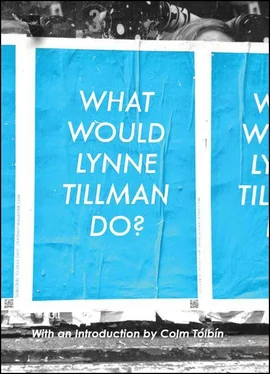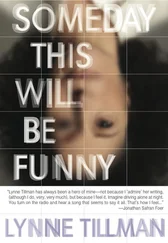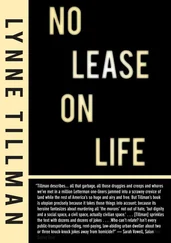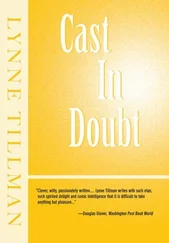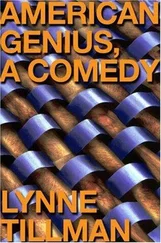Guide for the Misbegotten
In his novella Tonio Kröger , Thomas Mann writes, “Only a beginner believes those who create feel.” Kroger is a young middle-class German who considers himself manqué both as a bourgeois and as an artist. John Waters might be the anti-Kröger — a well-off, middle-class man whose life and art mock high, low, middle and all their fuzzy gradations. He’s an aesthete and an anti-aesthete; he’s classy and classless. Filmmaker, artist, writer, actor, Waters revels in spectacle and spectatorship; and the joys of making, being and observing fill the pages of Role Models , his 2010 collection of essays. In Mann’s terms, Waters might be that rare creature: An artist who feels.
Early in his career, Waters became known for films depicting bizarre characters in outrageous, super-melodramatic situations, as in Desperate Living (1977), a gay/lesbian/cross-dressing murder fantasy set in Mortville, a circuslike shantytown. Bakhtin’s theory of the carnivalesque nicely fits these films. A contemporary Lewis Carroll, Waters luxuriates in the topsy-turviness of life, and his somewhat more conventional recent films depend, like most narratives, on the reversal of fortune. In Pecker (1998), the eponymous protagonist flees instant New York art-world stardom when his photographs of Baltimore buddies and family subject them to unwanted and unsympathetic attention. What dances on the surface in this and other Waters films is explicit in Role Models: a concern for art, fun, justice and people.
The essays recount actual and imaginary encounters with ordinary but extraordinary people, as well as with celebrities such as Little Richard and 1950s crooner Johnny Mathis. Their stories, intermingled with Waters’ own, comprise a kind of bildungsroman, or even a portrait of the artist as a collage of his influences. Take the chapter on Mathis, which kicks off the book. “I wish I were Johnny Mathis,” Waters confesses. “So mainstream. So popular. So unironic, yet perfect.” None of these qualities characterizes Waters’ own oeuvre; but as he himself asks, “Do we secretly idolize our imagined opposites.?” Waters once chanced to see the elusive Mathis but didn’t have the nerve to talk to him, and then felt compelled to interview his undoppelgänger. “[Mathis’s] appeal is broad and wide, something I could never achieve and he can never escape.”
Thinking about the singer, Waters travels down memory lane and unearths other boyhood heroes, like Clarabell, the clown on TV’s Howdy Doody Show , played by Bob Keeshan, later Captain Kangaroo. “Imagine his life, his schizophrenia,” Waters writes of Keeshan. “Am I Clarabell? Or Captain Kangaroo?” It was Clarabell whose clownish makeup would inspire Divine — Waters’s apotheosis and star, the drag-queen actor featured in many of his films, first celebrated in Pink Flamingos (1972) for eating actual dog shit on a Baltimore street. Au revoir, good taste, Waters sings, and good riddance.
Role Models pays homage to Baltimore, Waters’s muse and hometown, whose culture spawned many magnificent oddballs, as well as the bars and barkeeps who nursed his imagination. In the chapter “Baltimore Heroes,” Waters writes, “The good [bars] have no irony about them. They’re not ‘faux’ anything. They’re real and alarming.” He gravitates toward characters like Esther, a fierce, bad mother with a filthy mouth who slings whiskey and fears nothing, and Lady Zorro, “an angry stripper with a history of physical and sexual abuse with a great body and the face of a man.” Waters reflects: “To this day Zorro is my inspiration. Brave. Without makeup. Like Tilda Swinton at the Oscars.”
Though irony is mother’s milk to him, Waters’s quest for genuine communication inside bullshit-free zones propels him toward worlds with and without irony. Sincerely insincere, insincerely sincere, authentically inauthentic, inauthentically authentic, his work vexes the normative and all the usual binaries. Oppositional terms can’t tell the stories he wants to tell. The mash-up of in-betweenness sparks Waters’s imagination, where insincerity can be sincere, sincerity ironic. Waters prodigiously exaggerates the deficiencies of false dichotomies: Each side of the aisle is desperately wanting. All this ongoing worry about “authenticity” in art and life, his oeuvre suggests, is moot, since human beings may be incapable of inauthenticity. Con artist Bernie Madoff’s commission of fraud doesn’t make Madoff a fraud: He’s absolutely Madoff.
In this vein, Waters prefers second-rate to first — Jayne Mansfield to Marilyn Monroe, “bad” Tennessee Williams to “good” Williams — but he also cherishes Jane Bowles’ Two Serious Ladies , one of the great American novels of the twentieth century, and the work of Denton Welch and Christina Stead. He’s a big reader, a bookworm. “I’ve jitterbugged with Richard Serra, eaten Thanks-giving dinner with Lana Turner. gone out drinking with Clint Eastwood. but what I like best is staying home and reading.”
Waters’s faves cover the map or, to put it differently, map his hybrid values, his “taste.” Taste is now a dirty word; theoretically, it’s near untouchable. Still, everyone has it and displays it, whether or not they think they do. Over and over in his art and these essays, Waters deftly shoves our noses in it. He’s a high-fashion hound whose idol is Rei Kawakubo of Comme des Garçons: “I genuflect to Rei’s destruction of the fashion rules.” He collects art by Moyra Davey, Mike Kelley and Cy Twombly, no outsider artists, and calls their work his “roommates.” But the high-style-and high-art-loving Waters is also a devotee of certain amateur or “outsider porn” moviemakers — without whom, he writes, “I could never have had the nerve to make my movies. Am I a pervert for loving the work of Bobby Garcia and David Hurles? Well, yes, I guess. But a healthy one.”
Waters complicates and flouts the boundaries of taste, but there’s no disingenuousness in his assault on all guises of high-mindedness. “Parents should understand that their young kids are not like them and need to have the privacy to fantasize both their good and bad desires,” he writes. Voilà: the youthful, healthy pervert. He suggests, from his upside-down perch, other alternative moral positions: “Zorro tried in her own misguided way,” he writes of the angry stripper’s mothering, which even psychoanalyst D.W. Winnicott might not have found “good enough.” Happily, the word “transgressive” doesn’t dot Waters’s essays. One, calling it so doesn’t make it so; two, transgression happens when you don’t know it; and three, he isn’t merely reactive to society’s dictates. He does what he likes and embraces his contradictions. So he sports a black Maybelline-pencil mustache and wears Comme des Garçons, but his manner can be as folksy as Will Rogers’s, and like that midwestern stand-up comic, he’s partial to truthfulness, good-natured subversions and self-deprecation. “The DJ. honors my presence by playing Eminem’s ‘Puke’ every time I come in the door.”
Waters layers his narratives with fantastic concoctions, but he tells us in the chapter titled “Leslie” that he learned the hard way to discern for himself the fault line between reality, which Timothy Leary once defined as an opinion, and the uses of make-believe in his art. Leslie is Leslie Van Houten, one of the “notorious ‘Manson girls,’” who was nineteen, in 1969, when she participated in the murder of Rosemary LaBianca on the orders of the insane, charismatic cult leader Charles Manson. Van Houten has been in prison since then and is now over sixty. Waters and Van Houten became friends, first because of Waters’ fascination with the Manson cult, but through knowing her — she lives with great remorse for her crimes — he reckons with his own conscience: “I am guilty, too. Guilty of using the Manson murders in a jokey, smart-ass way in my earlier films without the slightest feeling for the victims’ families or the brainwashed Manson killer kids who were also victims in this sad and terrible case.”
Читать дальше
